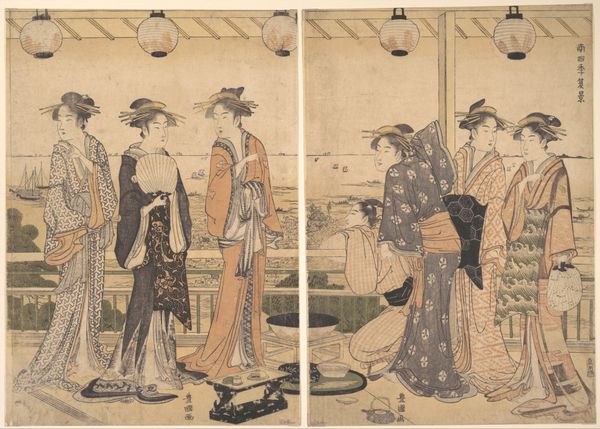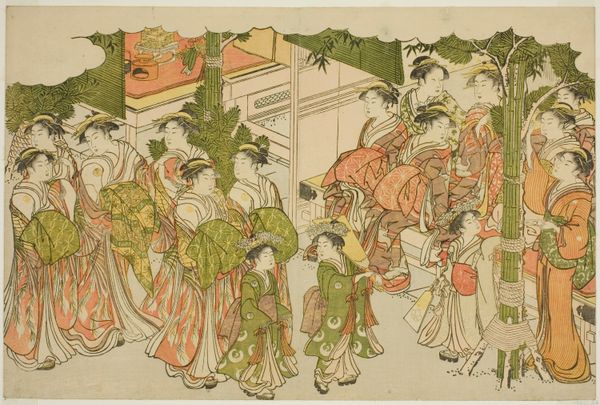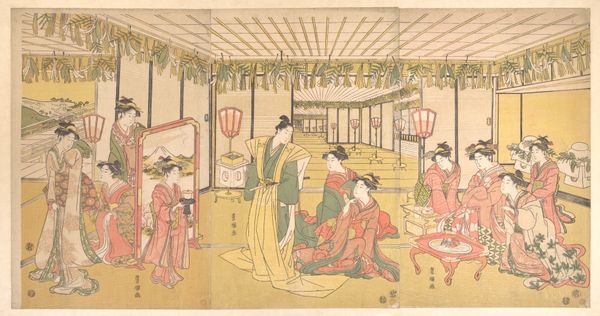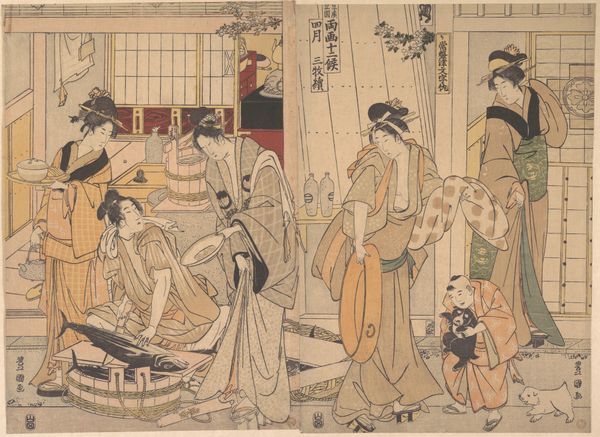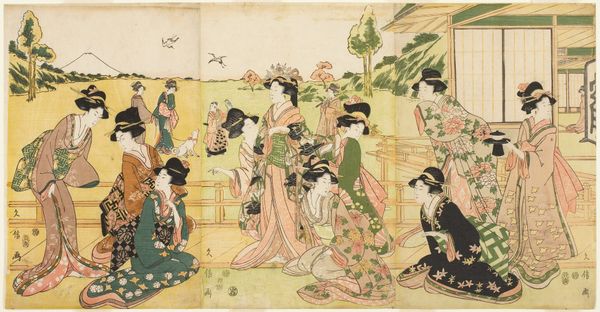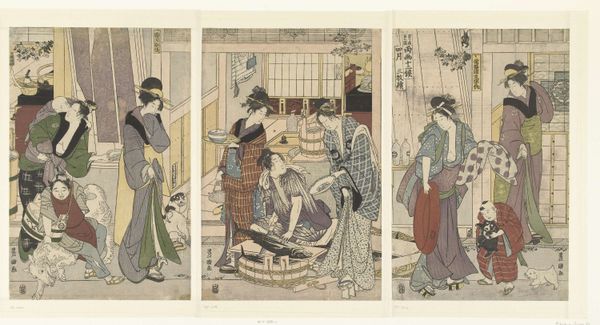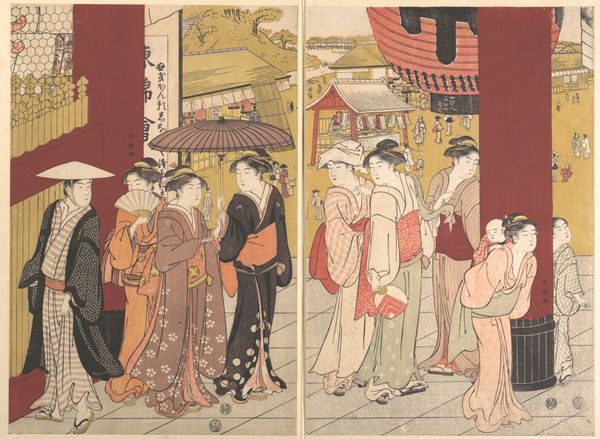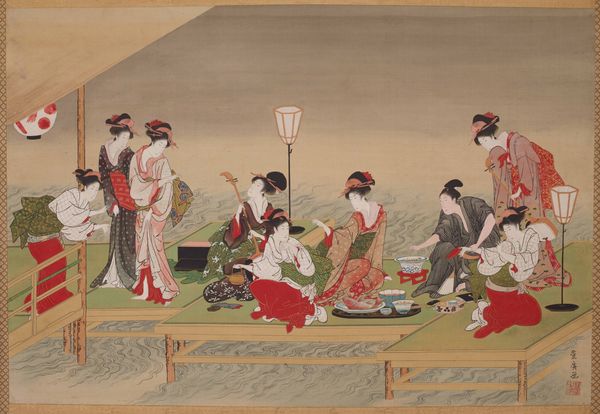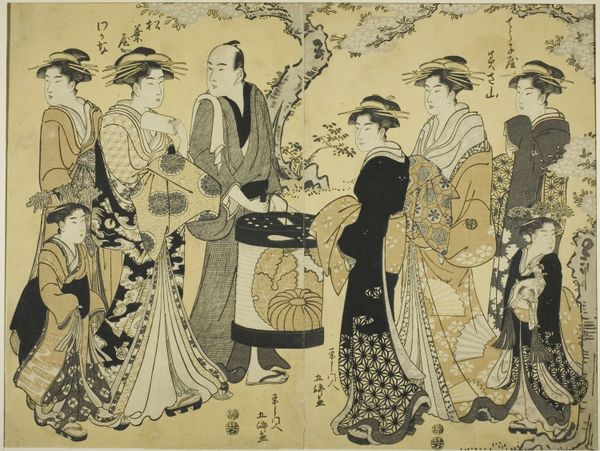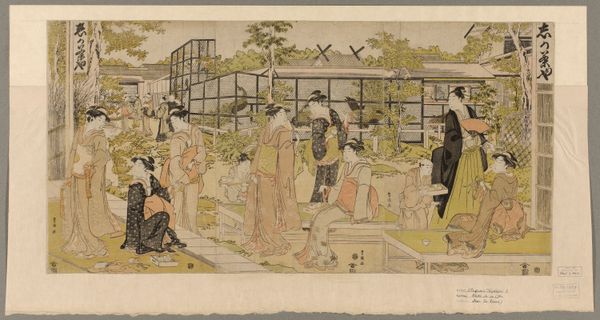
The Four Seasons in the South (Minami Shiki): Summer Scene n.d.
0:00
0:00
print, woodblock-print
#
portrait
# print
#
asian-art
#
ukiyo-e
#
woodblock-print
#
genre-painting
Dimensions: 39.1 × 25.4 cm (right sheet); 38.8 × 25.3 cm (center sheet); 38.8 × 25.5 cm (left sheet)
Copyright: Public Domain
Editor: "The Four Seasons in the South (Minami Shiki): Summer Scene," an undated woodblock print by Utagawa Toyokuni I. I’m immediately drawn to the depiction of women, and the activity surrounding them in the composition. What cultural narratives are at play here? Curator: Well, considering the artist's focus on Ukiyo-e, “pictures of the floating world," it’s likely we're seeing a slice of Edo-period entertainment. Notice how the women are arranged, some engaged in musical performance while others observe the scene. The backdrop appears to be a vantage point overlooking a harbor or seaside. Editor: It almost feels like a staged performance. Do you think the composition itself is making a commentary? Curator: Exactly! Ukiyo-e prints were often commodities, mass-produced for a burgeoning urban population. But beyond the aesthetics, works like this offer a valuable lens onto the social lives and leisure activities, and power structures of the time. What might the presence of multiple female figures, their attire and surroundings, convey to contemporary viewers of Ukiyo-e? Editor: I suppose they become emblems of the city's culture, or possibly, idealized versions of feminine grace and cultivated interests that upper classes would have sought to cultivate. Also, prints like this may give glimpses into architectural elements or the structure of society at that time. Curator: Precisely! Each carefully chosen detail – the instruments, the landscape view, even the lanterns overhead – served as a signifier within a visual language that spoke to contemporary audiences, reminding us that what we see as timeless art was, and is always rooted in time. Editor: I’ll certainly look at Ukiyo-e differently now, appreciating their role as more than just pretty pictures.
Comments
No comments
Be the first to comment and join the conversation on the ultimate creative platform.
